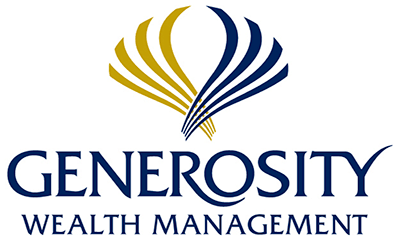Aug 22, 2025
Client Background
A working-age client with a strong income approached us to refine their financial strategy. They were charitably inclined and held a significant portfolio of appreciated stock. Their goal was to maximize their charitable impact while optimizing their tax situation.
Challenge
The client’s itemized deductions were close to the standard deduction, meaning they weren’t fully leveraging their charitable contributions for tax benefits. Donating cash would have required selling appreciated stock, triggering capital gains taxes and reducing the amount available for charity.
Solution
We implemented a “bunching” strategy using a Donor-Advised Fund (DAF). Every other year, the client donated a large amount of appreciated stock to the DAF, which sold the stock tax-free, allowing them to claim a full charitable deduction based on the stock’s market value. In those years, they took the itemized deduction, which exceeded the standard deduction. In alternate years, they took the standard deduction and distributed funds from the DAF to their chosen charities, maintaining their annual giving without additional stock contributions.
Why Donate Appreciated Stock to a DAF?
Donating appreciated stock to a DAF allows you to contribute the full market value of the stock without incurring capital gains taxes, as the DAF sells the stock tax-free. This maximizes your charitable deduction and the funds available for your chosen causes.
By bunching deductions into a single year, you can exceed the standard deduction, significantly reducing your taxable income in that year, while still supporting charities annually through DAF distributions in subsequent years, when you take the standard deduction.
Results
This approach allowed the client to increase their charitable impact while reducing their tax liability. By alternating between itemized and standard deductions, they optimized their tax savings and maintained consistent support for their charities. The strategy provided flexibility and aligned their giving with their financial goals.
Are you maximizing the tax benefits of your charitable giving? Contact Michael Brady for a personalized consultation to discuss how your wealth can align with purpose and possibility.
Aug 9, 2025
Client Background
A client, the only child of a parent, held a significant stock position with substantial capital gains, accumulated over many years.
Challenge
Selling the stock would trigger significant capital gains taxes, reducing the client’s net proceeds. They needed a tax-efficient way to realize the stock’s value while preserving wealth.
Solution
Working with their CPA and estate planning attorney, we facilitated a strategic gifting plan. The client gifted the appreciated stock to their elder parent, whose estate was below the 2025 estate tax exemption of $13.61 million. Upon the parent’s passing, the client inherited the stock with a stepped-up basis equal to its fair market value, eliminating capital gains.
Results
The client sold the inherited stock at the higher cost basis, avoiding capital gains taxes and maximizing their proceeds. This tax-efficient strategy preserved their wealth, aligning with their financial goals and demonstrating the power of coordinated estate planning.
Are capital gains reducing your wealth? Contact Michael Brady for a personalized consultation to discuss how your wealth can align with purpose and possibility.
Aug 8, 2025
Client Background
A retired couple with significant retirement assets sought our advice to manage their income efficiently. They were charitably inclined and wanted to support their favorite causes while maintaining financial efficiency.
Challenge
Their required minimum distributions (RMDs) from their IRAs pushed their Modified Adjusted Gross Income (MAGI) above the 2025 threshold of $206,000 for joint filers, triggering Income-Related Monthly Adjustment Amount (IRMAA) surcharges. IRMAA increases Medicare Part B and D premiums based on MAGI from two years prior, significantly raising healthcare costs for higher-income retirees.
Solution
We recommended using Qualified Charitable Distributions (QCDs). QCDs allow individuals over 70½ to transfer up to $105,000 annually (in 2025) from their IRAs directly to a qualified charity. These distributions count toward RMDs but are excluded from MAGI, lowering their taxable income. By directing a portion of their RMDs to charities via QCDs, we kept their MAGI below the IRMAA threshold, reducing their Medicare premiums.
Results
The couple maintained their charitable giving while significantly reducing their Medicare premiums, saving thousands annually. Their MAGI remained below the IRMAA threshold, ensuring cost-efficient healthcare coverage. This strategy aligned their philanthropy with tax efficiency, preserving more wealth for their future needs.
Are your RMDs increasing your Medicare costs? Contact Michael Brady for a personalized consultation to discuss how your wealth can align with purpose and possibility.
